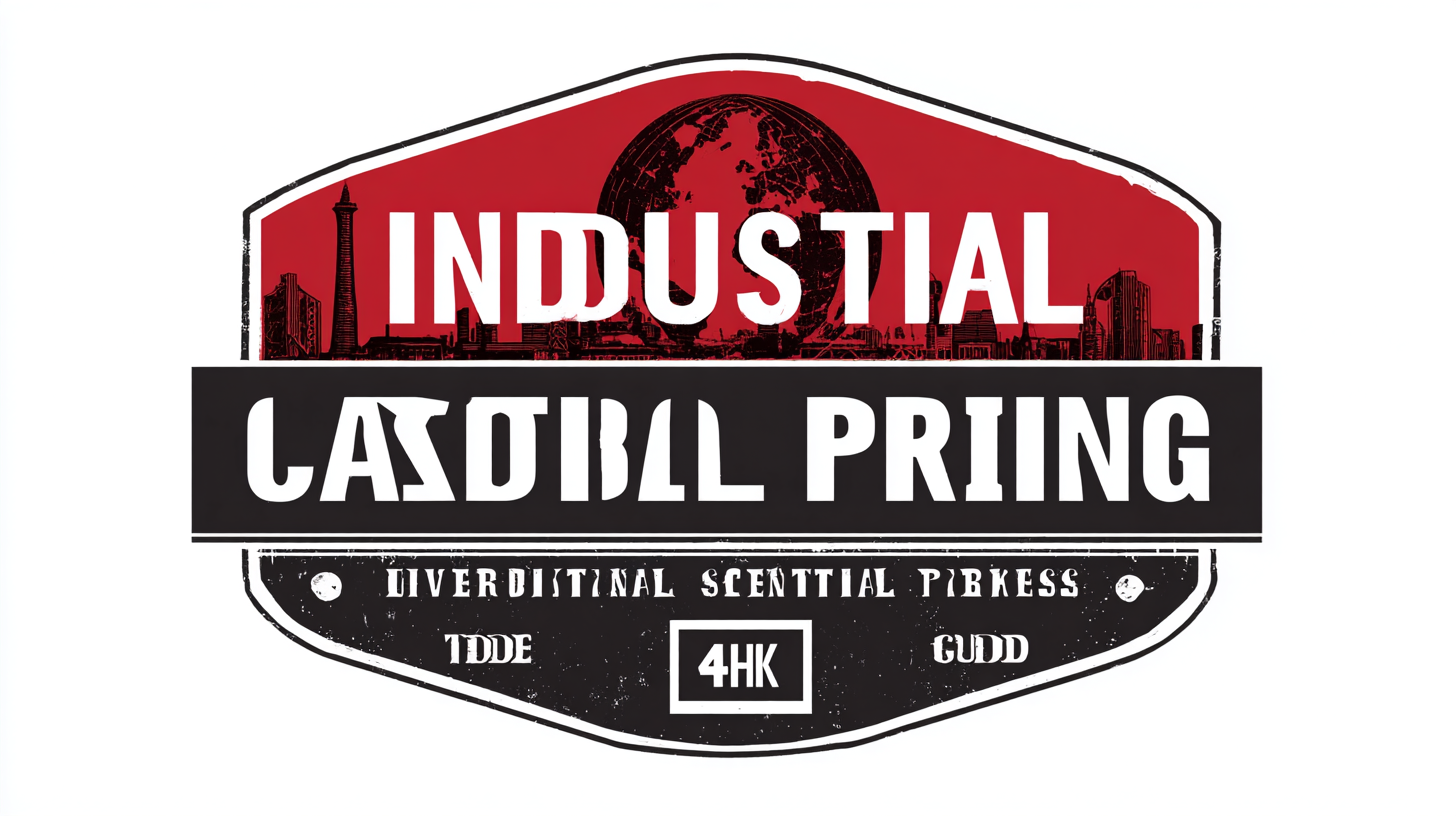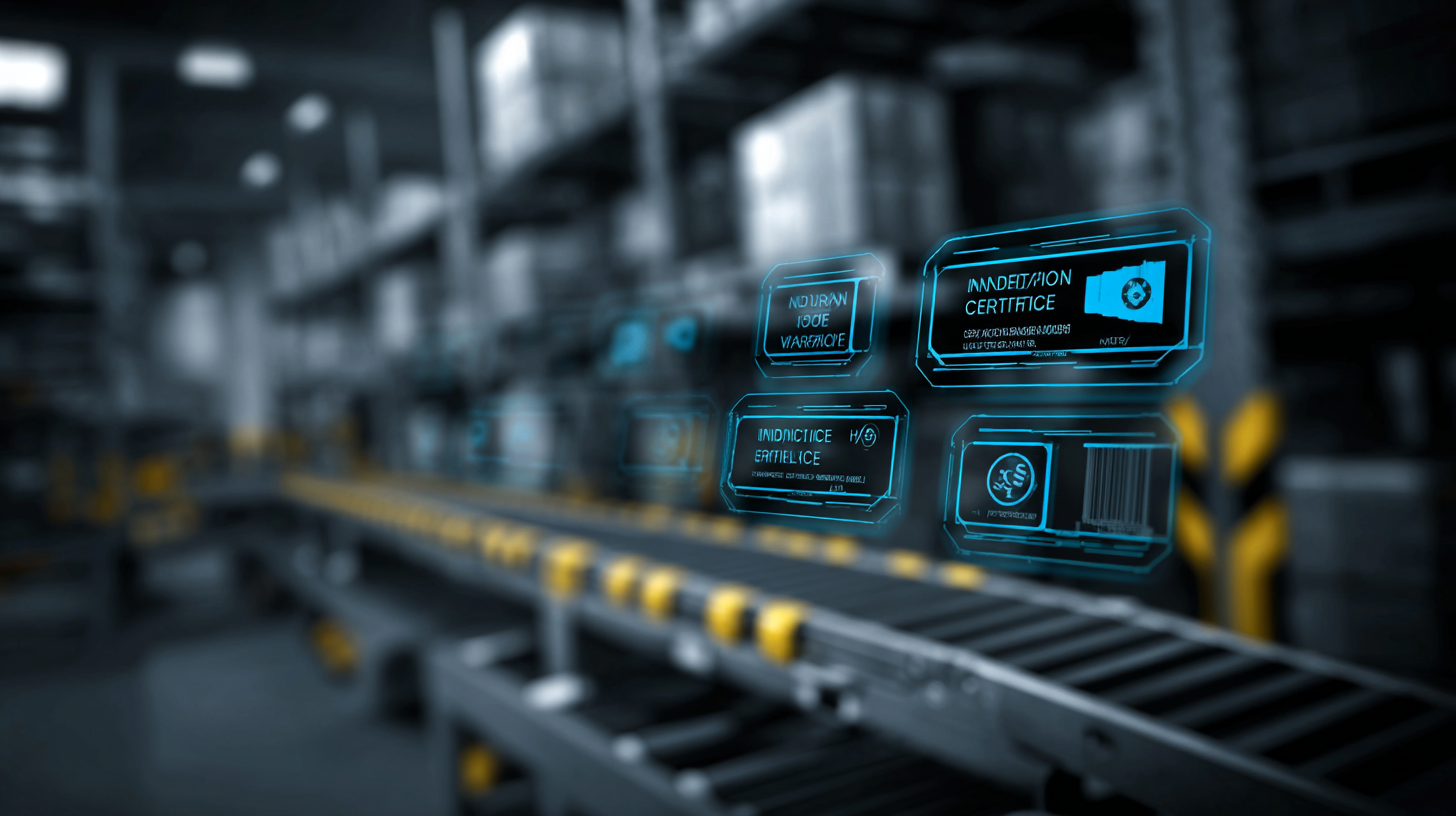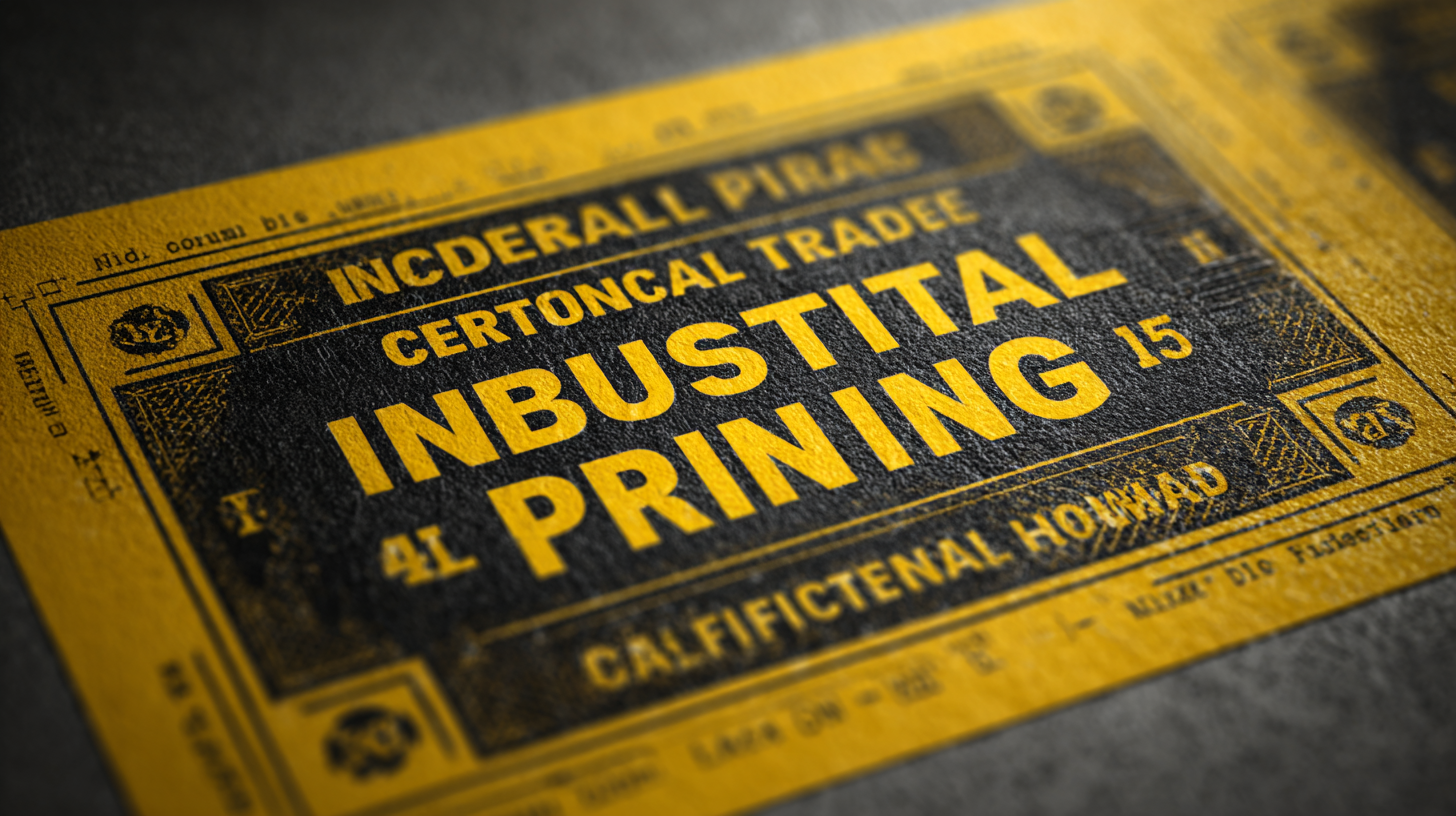Unlocking Global Trade How to Navigate Industrial Label Printing Certifications for Success
In today's rapidly evolving global marketplace, successful navigation of industrial label printing is paramount for businesses aiming to enhance their operational efficiency and maintain compliance with international standards. As companies expand their reach across borders, the importance of adhering to various certifications becomes increasingly clear. This blog will explore the critical role that certifications play in the industrial label printing sector, offering insights into best practices and strategies for achieving compliance. By unlocking the complexities of these certifications, businesses can not only streamline their production processes but also ensure that their products meet the expectations of consumers worldwide. Join us as we delve into the essentials of industrial label printing certifications and discover how they can pave the way for success in the global trade landscape.

Emerging Technologies in Industrial Label Printing for 2025
As we look toward 2025, the landscape of industrial label printing is set to be transformed by emerging technologies that emphasize efficiency and sustainability. The integration of artificial intelligence in the printing process will enable predictive maintenance and quality control, significantly reducing errors and waste.
 Meanwhile, the Internet of Things (IoT) enhances connectivity, allowing machines to communicate seamlessly and streamline operations, which is critical for adapting to the fast-paced demands of modern manufacturing.
Meanwhile, the Internet of Things (IoT) enhances connectivity, allowing machines to communicate seamlessly and streamline operations, which is critical for adapting to the fast-paced demands of modern manufacturing.
Blockchain technology is also making strides in label printing, offering unprecedented transparency and traceability in supply chains. This not only bolsters consumer trust but also streamlines compliance processes. Additionally, the rise of robotics in manufacturing will further automate label applications, increasing speed and precision. The recent Dscoop Edge Long Beach event highlighted these advancements, showcasing the next wave of digital labels that are at the forefront of packaging 4.0. With these technologies converging, businesses in the industrial sector will be uniquely positioned to enhance their operations and meet the escalating sustainability standards of the future.
Understanding Key Certifications in Global Trade for Label Printing
Navigating the landscape of industrial label printing certifications is essential for businesses aiming to succeed in global trade. As international trade evolves, the importance of adhering to specific certification standards becomes increasingly apparent. For instance, many companies now cite compliance with ISO standards as crucial for gaining access to global markets. According to recent industry reports, 75% of exporters affirm that certification boosts their competitive edge by enhancing product credibility and ensuring regulatory compliance.
**Tip:** Prior to entering new markets, conduct thorough research on the certifications that are widely recognized and required in your target areas. Engaging with trading partners who have local expertise can provide valuable insights.
Moreover, digital technologies are reshaping global trade, influencing how companies approach certifications. For example, advancements in blockchain technology facilitate transparent supply chain practices, simplifying the certification process. A survey indicates that 62% of businesses utilizing digital solutions report improved efficiency in regulatory compliance efforts.
**Tip:** Invest in digital tools that streamline your certification processes, as this can reduce both time and cost, allowing for smoother entry into diverse markets. As trade maintains its complexity, understanding these key certifications and their implications is integral to navigating the expanding global marketplace.

Best Practices for Compliance with Industrial Label Standards
Navigating the complexities of industrial label printing certifications is crucial for businesses looking to thrive in global trade. Compliance with industrial label standards not only enhances product visibility but also ensures safety and efficiency in supply chains. According to a recent report by the International Organization for Standardization (ISO), around 25% of products fail to meet regulatory requirements due to improper labeling, which can lead to costly recalls and reputational damage.
When striving for compliance, businesses should adopt best practices that align with the latest industry standards. It’s essential to stay updated on regional labeling regulations, such as the GHS (Globally Harmonized System of Classification and Labelling of Chemicals), which affects over 120 countries. This increases the importance of having a reliable quality control system in place.
**Tip**: Regularly train your staff on certification requirements and label compliance to reduce errors and misunderstandings. Organizations should also invest in advanced labeling technology to ensure labels are durable and resistant to harsh conditions, which is a crucial aspect highlighted in Inkwood Research’s recent analysis of printing technology trends. This not only helps in maintaining compliance but also bolsters product longevity in the market.
Future Trends in Label Printing Technology and Their Implications
The label printing industry is undergoing transformative changes driven by technological advancements and shifting consumer demands. According to Smithers Pira, the global label market is projected to reach $46.6 billion by 2025, with a compound annual growth rate (CAGR) of 4.8% from 2020 to 2025. This growth is significantly influenced by the rise of e-commerce, which necessitates efficient and attractive labeling solutions for various products. As brands seek to enhance their visibility and compliance across international borders, the importance of certification in industrial label printing becomes paramount.
Future trends in label printing technology highlight the integration of digital printing, automation, and sustainable materials. Digital printing, which accounted for around 17% of the label market in 2020, is expected to grow substantially as brands prioritize on-demand production and personalized labels. Moreover, the demand for eco-friendly labels is also on the rise, with a report from MarketsandMarkets indicating that the sustainable packaging market is anticipated to reach $440 billion by 2026, further propelling the need for certified, environmentally friendly label printing solutions. As the industry adapts to these trends, navigating certifications will be crucial for companies looking to maintain compliance and foster innovation in their labeling processes.
Unlocking Global Trade: How to Navigate Industrial Label Printing Certifications for Success - Future Trends in Label Printing Technology and Their Implications
| Certification Type | Description | Importance Level | Future Trends |
|---|---|---|---|
| ISO 9001 | Quality management systems ensuring consistent quality. | High | Integration of AI for quality assurance. |
| GHS Compliance | Globally Harmonized System for chemical labeling. | Medium | Digital printing advancements for flexibility. |
| UL Certification | Safety and performance standards for products. | High | Increased focus on sustainability in materials. |
| FDA Approval | Regulations for labeling food and medical products. | Critical | Traceability technologies in food packaging. |
| CE Marking | Declaration of compliance for products sold in the EU. | High | Automation in the certification process. |
Strategies for Successful Global Distribution of Label Products
Navigating the global distribution of industrial label products requires a strong emphasis on brand awareness and value. A well-established brand not only attracts customers but also instills trust, essential in a competitive marketplace. For instance, the global private label cosmetics market is projected to grow at a CAGR of 5.2% from 2025 to 2030, emphasizing the importance of companies establishing a recognizable presence. Brands that successfully leverage their identity can effectively differentiate themselves, creating a loyal customer base that drives sales and market expansion.
Strategic partnerships play a crucial role in enhancing brand visibility and facilitating market entry. By collaborating with reputable entities, businesses can reduce operational costs while simultaneously expanding their audience reach. This approach is increasingly relevant, as seen in various international alliances in retail that enhance cooperation within the A-brand industry. These strategic interactions allow companies to enhance their offerings and deliver value across different demographics, making it imperative for label manufacturers to cultivate and manage such partnerships to thrive in the global arena.
